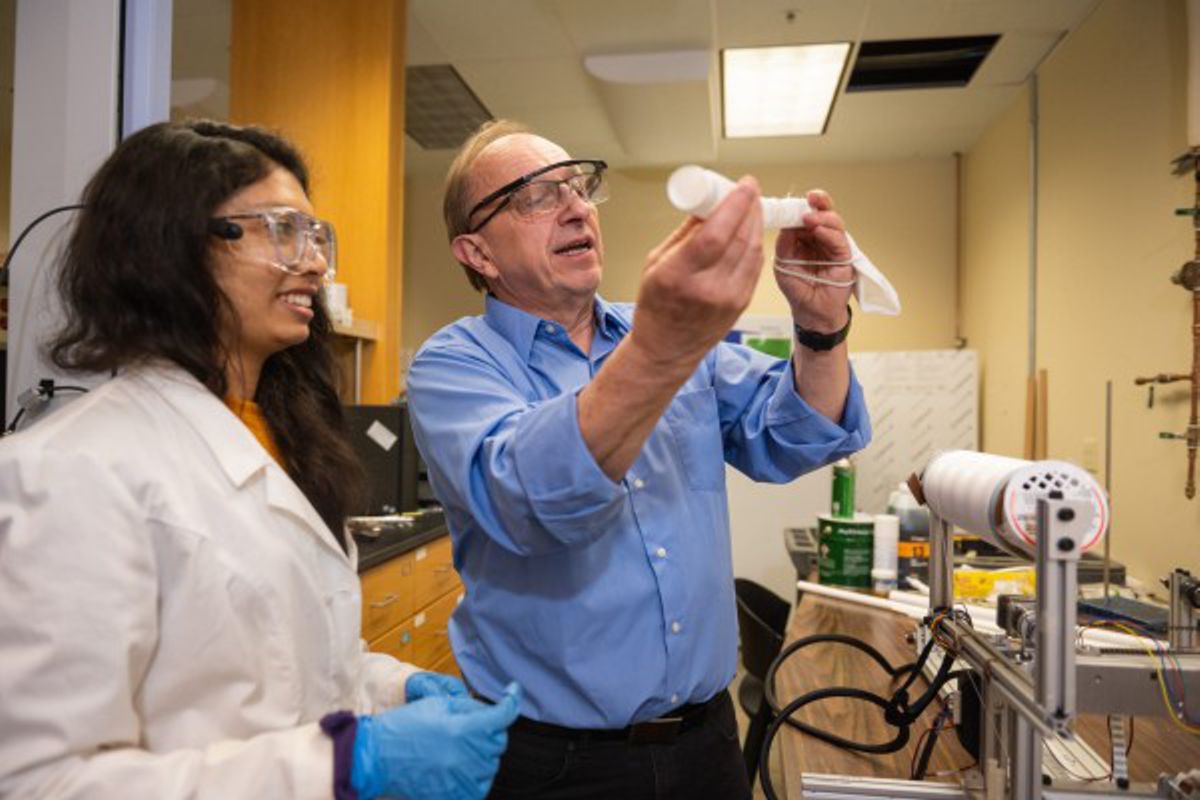Clemson University invents Hydrogen Hose that can repair its own cracks
Marek Urban and his research group at Clemson University have developed a self-repairing hose to dispense hydrogen as part of the nation’s effort to diversify its fuel supply in the face of increasingly dire warnings about climate change.
Hoses that are used to pump hydrogen must withstand high pressure and are prone to cracking when exposed to high and low temperatures and the normal wear and tear of everyday use. The hose’s inner layer is critical, because that is where the damage occurs, Urban said.
The hose that Urban and his team have developed makes the inner layer out of a self-healable copolymer matrix with Innegra fibres– a composite that heals itself like skin when it cracks.
A more durable hose for pumping hydrogen could help lower the cost of a sustainable fuel for buses, trucks and heavy equipment. The only by-products from vehicles powered by hydrogen fuel cells are heat and water, with no greenhouse gas emissions.
Urban has been developing self-healing materials for more than 20 years and has considered applications ranging from paint that repairs its own scratches to military vehicles that patch its own bullet holes to self-repairable pet toys. He discovered the hose project while searching for additional uses.
“The idea came from the need for this type of application and combining our technology at Clemson with something society needs,” said Urban, who is the J.E. Sirrine Foundation Endowed Chair in Advanced Polymer Fibre-Based Materials.
Urban is now conducting his research with financial backing from the U.S. Department of Energy and the National Science Foundation.
He and his team have used a table top robot to repeatedly bend the hose they have developed. Urban said they have shown the hose can withstand up to 10,000 damage-repair cycles under temperatures as high as 70 degrees Celsius and as low as -40 degrees Celsius.
The most recent version of the hose is undergoing additional testing at Sandia National Laboratories, Savannah River National Laboratory, and Pacific Northwest National Laboratory, Urban said. He expects the hose to prove it can stand up to 25,000 cycles by the end of the year.
Hydrogen dispenser hoses now in use tend to develop cracks after 1,000 cycles.
The next step will be to work with a manufacturer to make the new hose at a larger scale.
Urban has previously received funding for self-repairing materials from the National Science Foundation and the Department of Defense. He has published his research findings in leading journals, including Science and Nature.
“Dr. Urban’s research into hydrogen hoses is a testament to his leadership in the field of materials science and engineering and serves as an excellent example of how basic research leads to real-world application,” said Kyle Brinkman, chair of the Department of Materials Science and Engineering. “This work not only has the potential to lead to a more sustainable fuel supply but also helps inspire the next generation of scientists and engineers. I congratulate Dr. Urban on his success and look forward to seeing what’s next for his self-healing materials.”




















